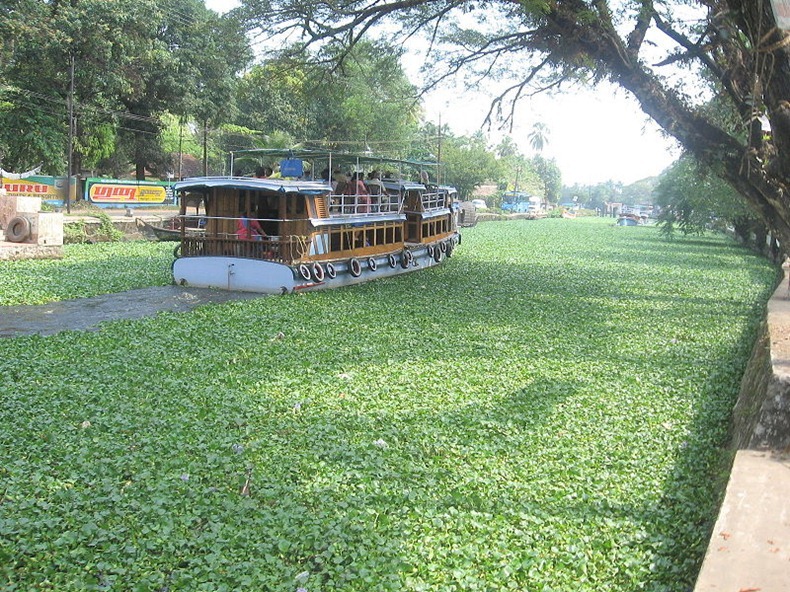Kerala, a state in southern India, is well-renowned for its backwater system – a network of interconnected canals, lagoons, rivers, lakes and inlets that run inland from the coast and which is spread over an extensive 900 km. The network includes five large lakes linked by canals, both manmade and natural, fed by 38 rivers, and extending virtually half the length of Kerala state. Traditionally, the backwaters are used by local people for transport, fishing, and agriculture. Annual snake boat races, held along the backwaters, also provide a great source of entertainment for the locals and tourists alike. The lagoons and lakes is a lasting source of livelihood for the indigenous people and a popular tourist attraction for the state.
The backwaters were formed by the action of waves and shore currents creating low barrier islands across the mouths of the many rivers flowing down from the Western Ghats range. Fed by the rivers, the backwaters are almost free of salty seawater. In certain areas, such as the Vembanad Kayal, artificial barrage has been built to prevent salt water from the sea from entering the deep inside, keeping the fresh water intact.

Houseboats called kettuvallams are one of the prominent tourist attractions in Kerala. More than 2000 kettuvallams ply the backwaters. The kettuvallams were traditionally used as grain barges, to transport the rice harvested in the fertile fields alongside the backwaters. At some point in time the boats were used as living quarters by the royalty. Converted to accommodate tourists, the houseboats have become floating cottages having a sleeping area, toilets, a dining area and a sit out on the deck. Some ketuvallams are motorised but generally proceed at a slow speed for smooth travel.












Very informative article. Thanks for sharing this details. Also I want you to share more information related with this article. Can you update in your website?
जवाब देंहटाएंKerala backwaters